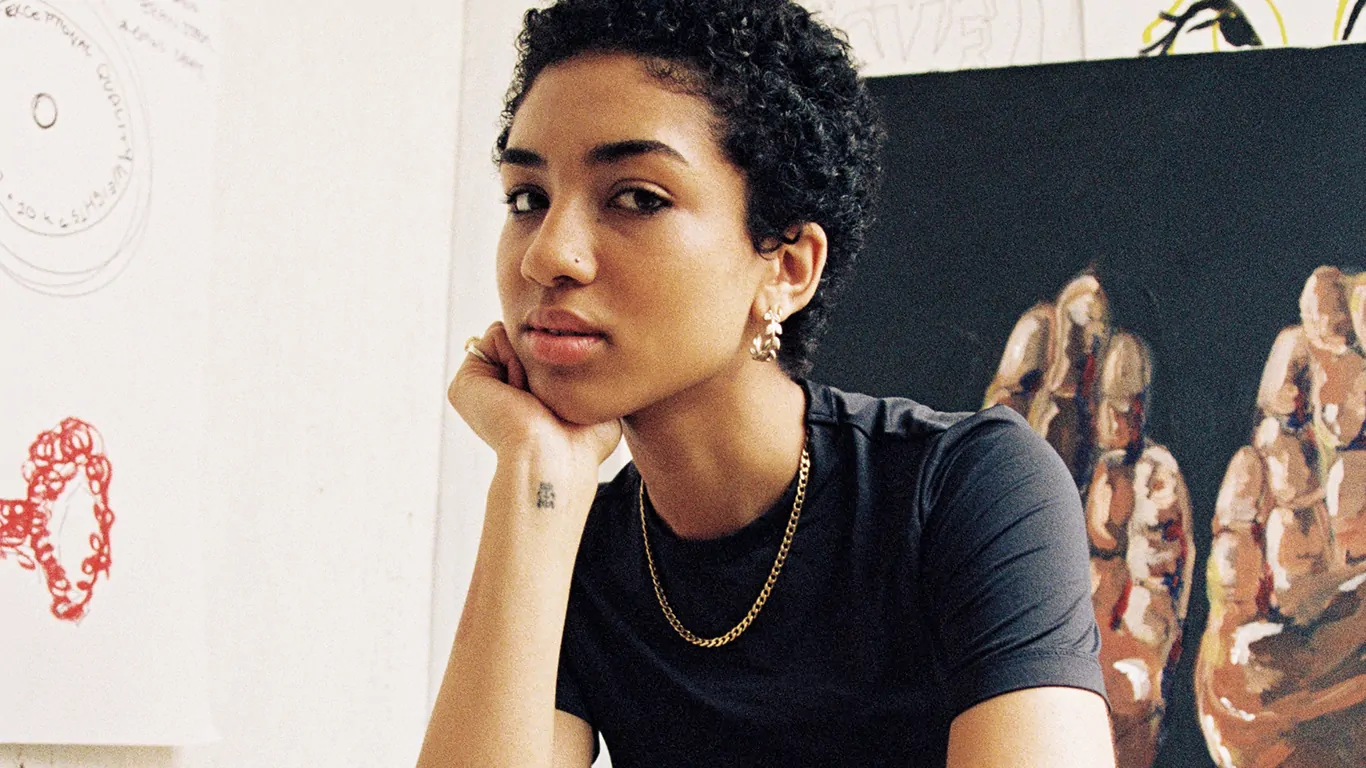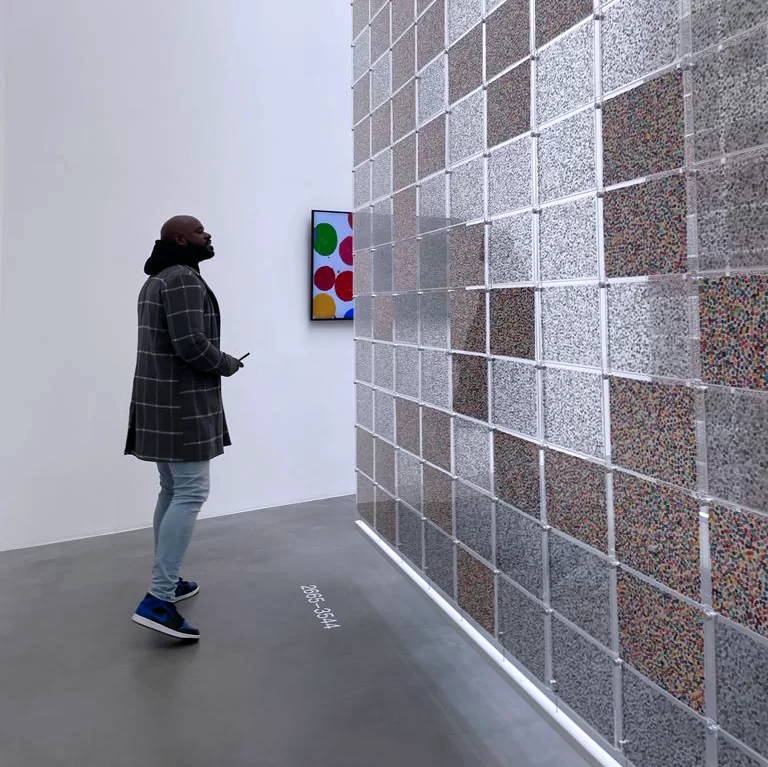In her paintings, sculpture and textiles, womanhood is where power becomes tender, joy turns strategic, and truth resists performance.
Before a single visitor steps into the gallery, LOVE/FIGHT, the debut solo exhibition by London-based artist Betty Ogundipe, is already alive with tension. It announces its terms plainly — tenderness in one hand, resistance in the other — and asks us to sit with both.
For Ogundipe, that is not paradox but necessity. “Being a woman often demands both,” she says. “The title LOVE/FIGHT puts a name to that duality and gives it permission to take up space.” Her practice moves across painting, photography, textiles, sculpture and video, but the medium always bends to the same purpose: to build a language that is emotionally unflinching, unwilling to resolve into neat categories.
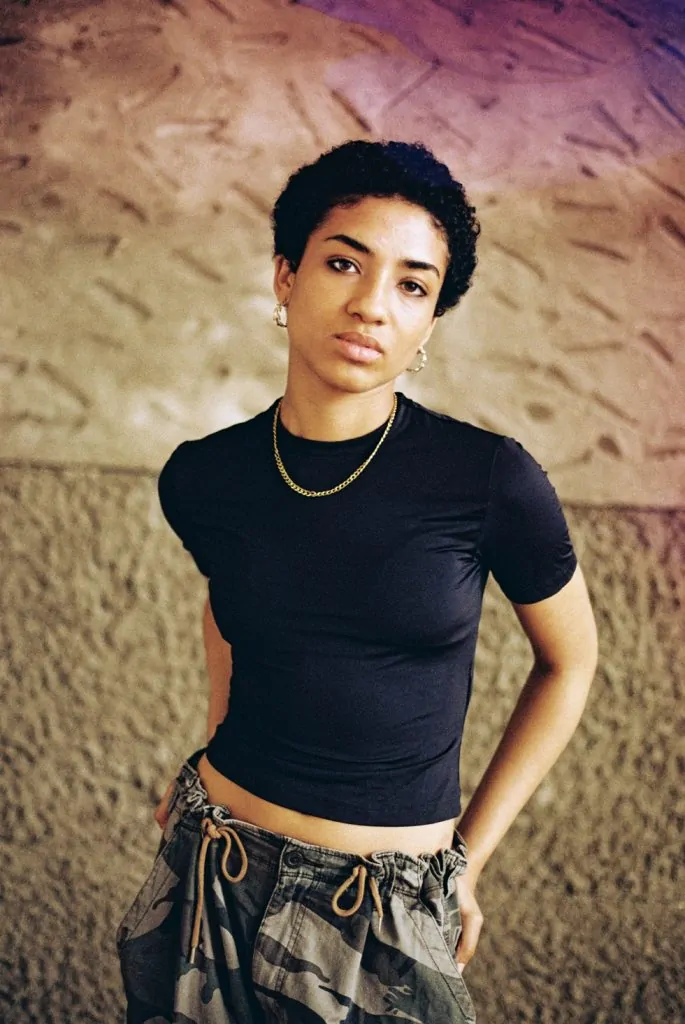
Courtesy of the artist
Photography Mariana Pires
For me, I see no contradiction between love and resistance, because being a woman often demands both
Betty Ogundipe
Her Fight series draws on martial arts not for aggression, but for discipline and inner conflict — reminding us that struggle is often internal, psychological, unseen. Her use of the checkerboard motif furthers this sense of strategic tension: a visual pattern that operates as a map of survival, identity and tactical presence. Its rhythmic pull becomes a field across which her figures resist, retreat, or hold ground.
One work, Untitled (2022), makes this plain. Two boxers stand in the heat of combat, their bodies less figures than forces. Ogundipe paints them not as portraits but as emblems — faces blurred, limbs heavy with gesture. Painted in an expressionist hand, the canvas is saturated with colour that does more than describe flesh: it carries the weight of struggle, of endurance, of what it feels like to be both vulnerable and unyielding. The fight is literal. And it is not. This piece holds my gaze completely — a work that collectors of emerging artists would do well to watch.
Her figures are tightly cropped, radiating a palpable sense of movement, thrusting you into the immediacy of the action. Their limbs intertwine with tension, and their dark, muscular forms dominate the foreground. We are denied the luxury of distance — this is not a spectator’s view, but an immersion in the struggle.
Many of her paintings emerge directly from imagination — unmediated by reference, unburdened by literalism. What results is not straightforward representation, but distilled atmosphere: interiors of the mind and body rendered in oil, cloth and rhythm. Ogundipe’s figures appear poised yet unknowable — women in motion, in stillness, in codes of performance and defiance. Ogun navigates the aesthetics of visibility and the politics of presence, asking what happens when Black women, especially, are expected to be seen but not heard.
Born and raised in London, Ogundipe’s perspective is shaped by the layered nature of diasporic life in the city. She observes the structures of exclusion and inherited memory — and channels all of it into work that is emotionally grounded but politically attuned. Her compositions are not portraits in the traditional sense; they are expressions of care without exploitation. Whether drawn from women she has encountered or imagined, they aim not to replicate likeness, but to hold a gesture, an aura, a truth.
In this debut, there is no attempt to smooth out contradictions. Instead, LOVE/FIGHT asks us to sit within them — to understand that power can be tender, and that joy can be strategic. Ogundipe doesn’t work to impress. She works to insist. “I’m here as a woman, being a woman,” she says. “And that’s enough.”
Betty Ogundipe: LOVE/FIGHT opens on the 18th of September, 2025 until the 23rd of October, 2025 at Tache Gallery
‘LOVE/FIGHT’ is a title that sets up a powerful contradiction—affection and resistance, tenderness and confrontation. How did these opposing forces come to define this debut solo exhibition?
Betty Ogundipe: For me, I see no contradiction between love and resistance, because being a woman often demands both. The title LOVE/FIGHT puts a name to that duality and gives it permission to take up space. It’s more so about survival, and the acceptance that life can demand we balance our resilience with a softness.
The world can be hard, but we can resist: we can push back against it by being soft. It became a space to honour that balance and to centre women who are intentionally sensitive and militant at the same time, holding their softness not as a weakness, but as a strength sharpened by discipline, experience and emotional truth.

Copyright the artist
Courtesy of Tache Gallery
Your work sits at the crossroads of documentary and abstraction. How do you navigate that space—where memory, lived experience, and emotion often blur?
Betty Ogundipe: Memory is never fixed. Sometimes, a memory is so sharp, so visual and so alive in my mind that I’ll paint or draw to record its essence, to come back to later. Other times, it’s about communicating my emotions – I need to create that scene, or recreate that energy in motion, to get my thoughts and feelings across. It’s less about method: more about honesty and letting my vision guide the image.
When complete, my works always have been, and always will be, documentations of the things I see happening now. My experience of living here and now. So, I’ll use a remembered scene or a symbol to talk about these things.
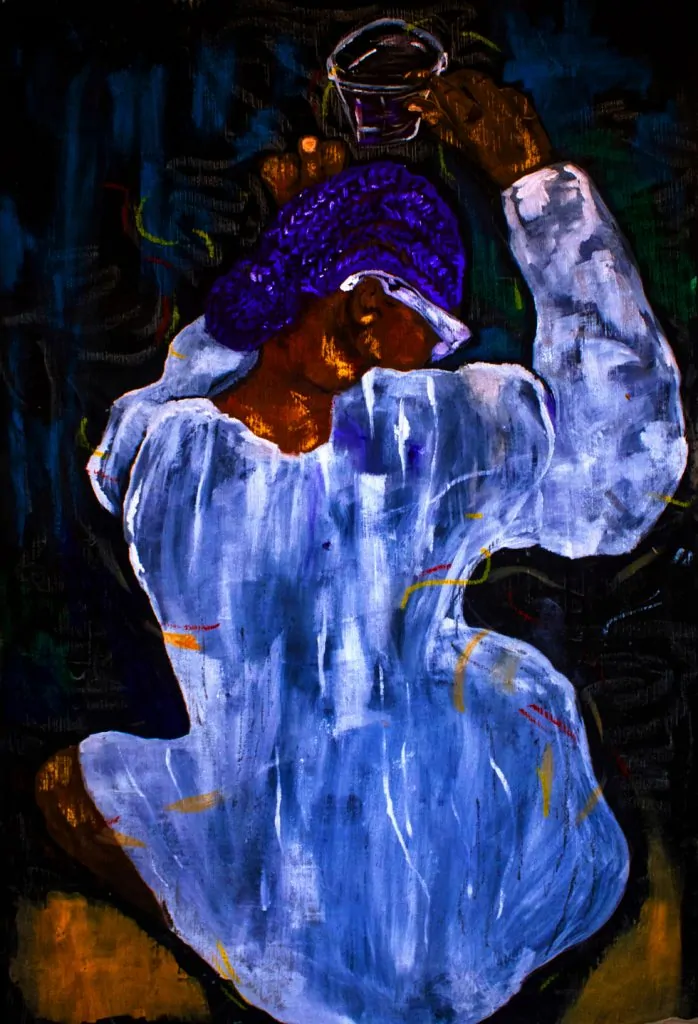
Copyright the artist
Courtesy of Tache Gallery
In Enjoy and Cheerleader, you reframe an archetype of synchronised femininity with complexity and critique. What drew you to the cheerleader as a subject—and as a symbol?
Betty Ogundipe: She’s visible and polished, but still overlooked. The cheerleader is expected to support, not to speak. I wanted to shift that dynamic with my practice. The works honour her joy and her complexities, and how these exist within and without her performance.
This is a metaphor, as the cheerleader’s contradiction is what first caught my attention. As women, we can be visible, even celebrated for our visual appearances, yet still sidelined. Enjoy is about reclaiming her image. She’s not cheering for someone else; she’s dancing alone, totally and assuredly herself. Cheerleader is layered, too – what happens when the uniform you are given doesn’t protect you, when your pose isn’t enough?
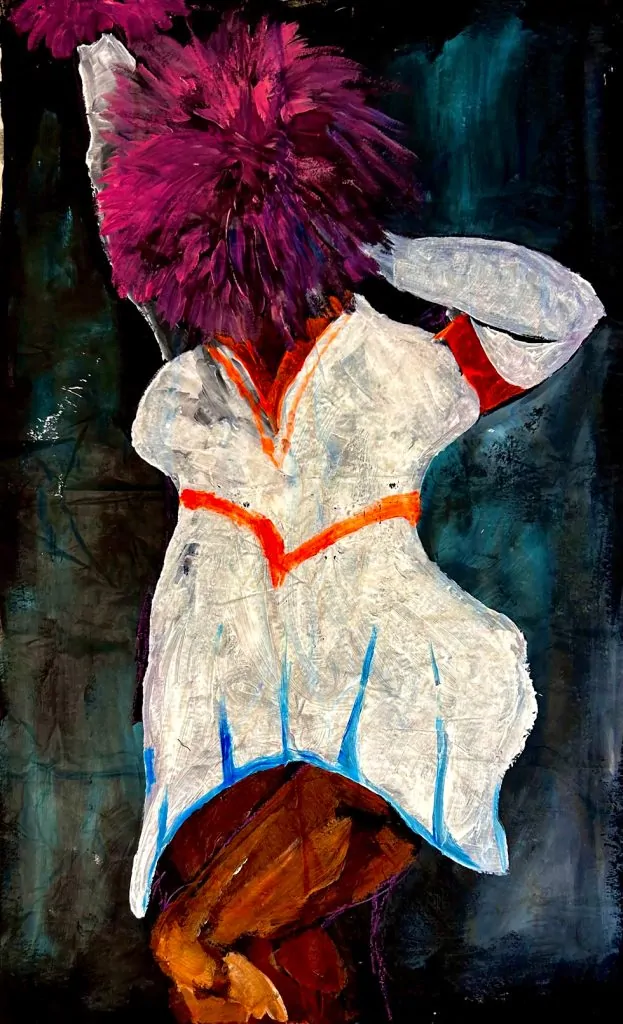
Copyright the artist
Courtesy of Tache Gallery
The concept of “performance” recurs in your work—be it bodily, social, or emotional. How much of your practice is shaped by your own experience navigating these expectations?
Betty Ogundipe: With performance, it’s survival. Sometimes we learn to move through rooms in coded ways. An awareness of this runs through my work. Sometimes I expose it and sometimes I resist it, but it’s always present. I’m going off of my core lived experiences. To get into a lot of rooms, I’ve noticed that my peers and I have to perform, and therefore conform to, an idea of femininity just to be taken seriously. It’s a tightrope – doing something deemed ‘wrong’ by the patriarchy can bring about a lot of shame, and in so many cases violence, to a woman’s doorstep. Our very existence can be a form of resistance, at times.
You work fluidly across painting, photography, textiles, sculpture and video. What drives your choice of medium for a particular narrative or emotional register?
Betty Ogundipe: Each story has its own temperature. Some need the intimacy of fabric, others the immediacy of paint or the stilled records of film and photography. I follow the medium that feels most alive in the moment—nothing’s fixed, though I only really use materials that require me to work quickly and energetically. Above everything, my work must stay real. This is why the majority of my paintings come straight from my mind. Cheerleader didn’t develop from a reference or a photograph. She had been sitting in my mind way before I knew exactly what she was about.
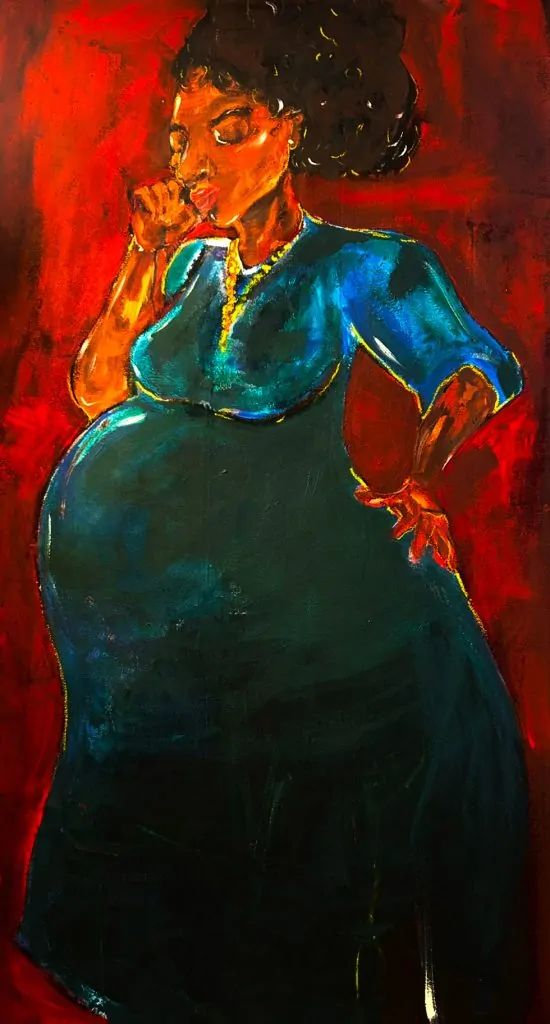
Copyright the artist
Courtesy of Tache Gallery
There’s a strong current of resilience throughout the exhibition. What does resilience look like to you when filtered through the lens of Black womanhood?
Betty Ogundipe: It’s about softness and focus. I don’t want to romanticise resilience, but I do respect it. I centre Black women in my compositions, because–again–my pieces are pulled from my own lived experiences. Although, I think I can speak to all women when I say we’ve carried a lot. Resilience can also be a form of motivation or discipline. We struggle sometimes, but when we remember why we’re here, we’re back. I make work for those who, despite all they’ve been through, are still going, still refining their intentions and still learning.
In the Fight series, the confrontation doesn’t always appear external—it often feels internal or psychological. How do you build that sense of interiority through your visual language?
Betty Ogundipe: I think it can only really come from the way I’m working – quickly, with a lot of energy, letting the ideas come through, but knowing what the bigger picture is. Fight is about martial arts, but also about emotional struggle. I’m interested in what conflict looks like when it’s not external, when the real fight is inside you. I use body language, repetition and rhythm to show that – a clenched jaw, a slight lean, a tightened hand, a reminder that your biggest enemy is yourself. It’s less about action and more about presence under pressure; less about tension and more about keeping calm and carrying on.
The repeated checkerboard motif in your textile works suggests tactics, strategy and power dynamics. Can you speak to how this pattern functions both visually and symbolically in your practice?
Betty Ogundipe: It’s about power. Chess is planning, sacrifice and control. The checkerboard becomes a map of identity, strategy and survival. It’s also a visual rhythm, something to steady the eye, as the figure resists being read. Every move matters. The motif reminds me of this: identity isn’t linear, and survival often requires implementing tactics. Visually, it’s also grounding: a system that the body can push against or hide inside. It also challenges how we read space. Are you looking at a pattern or a map? A game or a warning? I use it to set up questions around power, pressure and presence.
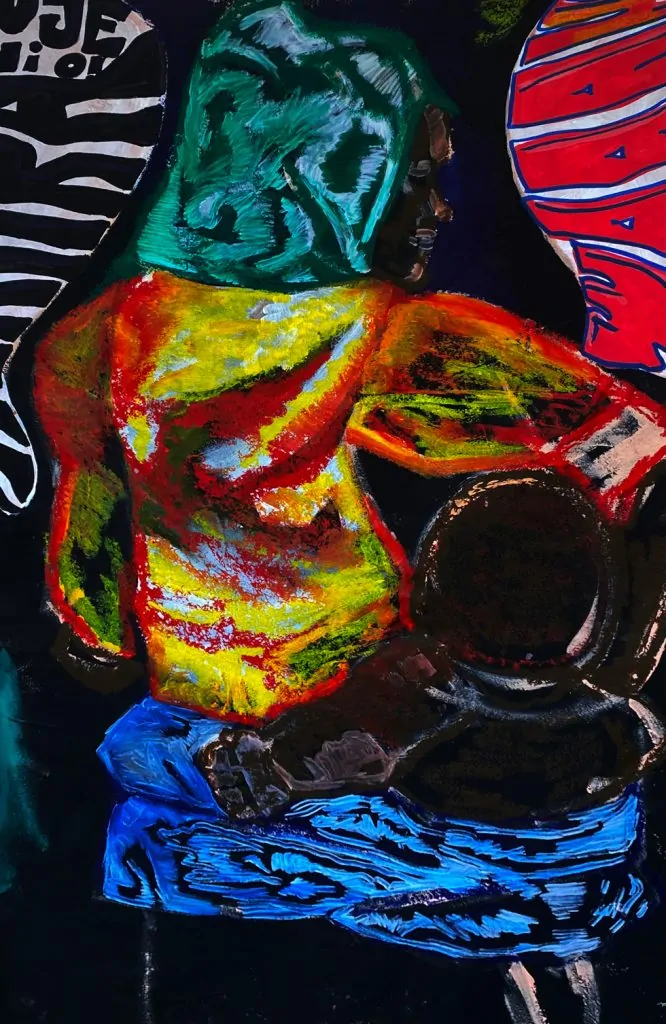
Copyright the artist
Courtesy of Tache Gallery
Thinking and Mother and Baby Unit are based on women you’ve encountered or observed. How do you translate individual stories into broader, symbolic compositions?
Betty Ogundipe: I start with care. I observe and listen to understand, but I never really aim for portraiture, instead distilling emotion, gesture and energy down to the message I’m trying to convey. I think stories hold power because they’re specific and shared. That’s what makes history. I’m also not interested in exploiting faces or bodies, which is why I’d stopped taking so many photographs. I had things to talk about, and it didn’t feel right projecting that onto candid photographs of other people in the name of documentation. I’m on this visual search for truth, so it really has to come straight from my mind as opposed to staged scenes.
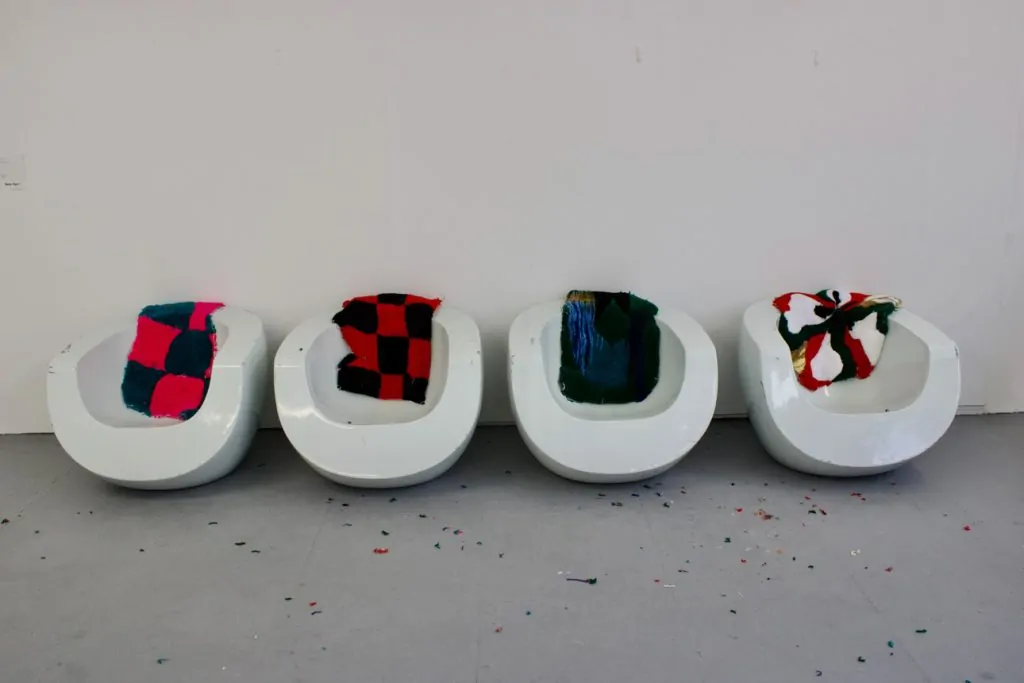
Copyright the artist
Courtesy of Tache Gallery
How has living and working in London influenced your approach to identity, race and gender—especially within the context of diasporic culture and postcolonial complexity?
Betty Ogundipe: I was raised here. London has taught me about duality. There is closeness and distance in British culture, pride and pressure. Diaspora isn’t a singular story here: it’s layered, defiant and fast-moving, and we’re all in conversation with the past. Being here taught me to look closely at structure, at what’s celebrated and what’s excluded. It made me more deliberate in my work. London has taught me how to hold complexity and still speak clearly. That shaped not just my work, but how I carry myself. It’s where I get my baseline of inspiration from – the real life happening around me.
This exhibition is a debut, but it also feels like a culmination. What did you learn about your own voice or vision in the process of bringing LOVE/FIGHT into the world?
Betty Ogundipe: I learned I can trust it. This show stretched me across form, memory and emotion. I learned to speak without softening anything, because I’m already a soft person. LOVE/FIGHT proves that I don’t work performatively – I’m telling the truth. I also learned that I can move across form and still be recognisable, that versatility is part of my voice. This has been a chance for me to establish my manifesto outwardly and reaffirm that I’m going to keep talking. I’m here as a woman, being a woman, and it’s enough. There’s power there.
©2025 Betty Ogundipe


